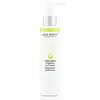What's inside
What's inside
 Key Ingredients
Key Ingredients

 Benefits
Benefits

 Concerns
Concerns

No concerns
 Ingredients Side-by-side
Ingredients Side-by-side

Water
Skin ConditioningCoco-Glucoside
CleansingGlycerin
HumectantDecyl Glucoside
CleansingCitrus Grandis Peel Oil
MaskingXanthan Gum
EmulsifyingAloe Barbadensis Leaf Extract
EmollientChamomilla Recutita Extract
Skin ConditioningCitrus Grandis Seed Extract
AstringentCamellia Sinensis Leaf Extract
AntimicrobialLinum Usitatissimum Seed Extract
PerfumingCitrus Medica Peel Oil
Citrus Medica Limonum Peel Extract
EmollientPotassium Sorbate
PreservativeCitric Acid
BufferingWater, Coco-Glucoside, Glycerin, Decyl Glucoside, Citrus Grandis Peel Oil, Xanthan Gum, Aloe Barbadensis Leaf Extract, Chamomilla Recutita Extract, Citrus Grandis Seed Extract, Camellia Sinensis Leaf Extract, Linum Usitatissimum Seed Extract, Citrus Medica Peel Oil, Citrus Medica Limonum Peel Extract, Potassium Sorbate, Citric Acid
Aloe Barbadensis Leaf Juice
Skin ConditioningGlycerin
HumectantPyrus Malus Juice
Skin ConditioningDecyl Glucoside
CleansingCoco-Glucoside
CleansingXanthan Gum
EmulsifyingCitrus Limon Juice
Skin ConditioningVitis Vinifera Juice
AntioxidantCaprylyl/Capryl Glucoside
CleansingVaccinium Myrtillus Fruit Extract
Skin ConditioningSaccharum Officinarum Extract
MoisturisingAcer Saccharum Extract
Skin ConditioningTaraxacum Officinale Leaf Extract
Skin ConditioningSalvia Officinalis Leaf Extract
CleansingTocopherol
AntioxidantLactic Acid
BufferingGlycolic Acid
BufferingSodium Levulinate
Skin ConditioningPotassium Sorbate
PreservativeSodium Phytate
Citric Acid
BufferingCitrus Aurantium Dulcis Flower Oil
AstringentLitsea Cubeba Fruit Oil
MaskingCinnamomum Camphora Wood Oil
MaskingCitrus Grandis Peel Oil
MaskingAloe Barbadensis Leaf Juice, Glycerin, Pyrus Malus Juice, Decyl Glucoside, Coco-Glucoside, Xanthan Gum, Citrus Limon Juice, Vitis Vinifera Juice, Caprylyl/Capryl Glucoside, Vaccinium Myrtillus Fruit Extract, Saccharum Officinarum Extract, Acer Saccharum Extract, Taraxacum Officinale Leaf Extract, Salvia Officinalis Leaf Extract, Tocopherol, Lactic Acid, Glycolic Acid, Sodium Levulinate, Potassium Sorbate, Sodium Phytate, Citric Acid, Citrus Aurantium Dulcis Flower Oil, Litsea Cubeba Fruit Oil, Cinnamomum Camphora Wood Oil, Citrus Grandis Peel Oil
Ingredients Explained
These ingredients are found in both products.
Ingredients higher up in an ingredient list are typically present in a larger amount.
Citric Acid is an alpha hydroxy acid (AHA) naturally found in citrus fruits like oranges, lemons, and limes.
Like other AHAs, citric acid can exfoliate skin by breaking down the bonds that hold dead skin cells together. This helps reveal smoother and brighter skin underneath.
However, this exfoliating effect only happens at high concentrations (20%) which can be hard to find in cosmetic products.
Due to this, citric acid is usually included in small amounts as a pH adjuster. This helps keep products slightly more acidic and compatible with skin's natural pH.
In skincare formulas, citric acid can:
While it can provide some skin benefits, research shows lactic acid and glycolic acid are generally more effective and less irritating exfoliants.
Most citric acid used in skincare today is made by fermenting sugars (usually from molasses). This synthetic version is identical to the natural citrus form but easier to stabilize and use in formulations.
Read more about some other popular AHA's here:
Learn more about Citric AcidCitrus Grandis Peel Oil is an essential oil that is derived from the peel of a Grapefruit. It is composed largely of limonene, which is a fragrance that can cause irritation for sensitive skin.
Coco-Glucoside is a surfactant, or a cleansing ingredient. It is made from glucose and coconut oil.
Surfactants help gather dirt, oil, and other pollutants from your skin to be rinsed away.
This ingredient is considered gentle and non-comedogenic. However, it may still be irritating for some.
Learn more about Coco-GlucosideDecyl Glucoside is a glucose-based surfactant and emulsion stabilizer. It is created by reacting glucose with the fatty acids from plants.
Surfactants help clean the skin by trapping oil, sebum, and dirt to be washed away. As an emulsion stabilizer, it stabilizes the ingredients in a product by preventing them from separating.
This ingredient is biodegradable and non-toxic. This ingredient is commonly found in baby shampoos.
Decyl Glucoside is sometimes used to stabilize the UV filter Tinosorb.
Learn more about Decyl GlucosideGlycerin is already naturally found in your skin. It helps moisturize and protect your skin.
A study from 2016 found glycerin to be more effective as a humectant than AHAs and hyaluronic acid.
As a humectant, it helps the skin stay hydrated by pulling moisture to your skin. The low molecular weight of glycerin allows it to pull moisture into the deeper layers of your skin.
Hydrated skin improves your skin barrier; Your skin barrier helps protect against irritants and bacteria.
Glycerin has also been found to have antimicrobial and antiviral properties. Due to these properties, glycerin is often used in wound and burn treatments.
In cosmetics, glycerin is usually derived from plants such as soybean or palm. However, it can also be sourced from animals, such as tallow or animal fat.
This ingredient is organic, colorless, odorless, and non-toxic.
Glycerin is the name for this ingredient in American English. British English uses Glycerol/Glycerine.
Learn more about GlycerinPotassium Sorbate is a preservative used to prevent yeast and mold in products. It is commonly found in both cosmetic and food products.
This ingredient comes from potassium salt derived from sorbic acid. Sorbic acid is a natural antibiotic and effective against fungus.
Both potassium sorbate and sorbic acid can be found in baked goods, cheeses, dried meats, dried fruit, ice cream, pickles, wine, yogurt, and more.
You'll often find this ingredient used with other preservatives.
Learn more about Potassium SorbateXanthan gum is used as a stabilizer and thickener within cosmetic products. It helps give products a sticky, thick feeling - preventing them from being too runny.
On the technical side of things, xanthan gum is a polysaccharide - a combination consisting of multiple sugar molecules bonded together.
Xanthan gum is a pretty common and great ingredient. It is a natural, non-toxic, non-irritating ingredient that is also commonly used in food products.
Learn more about Xanthan Gum